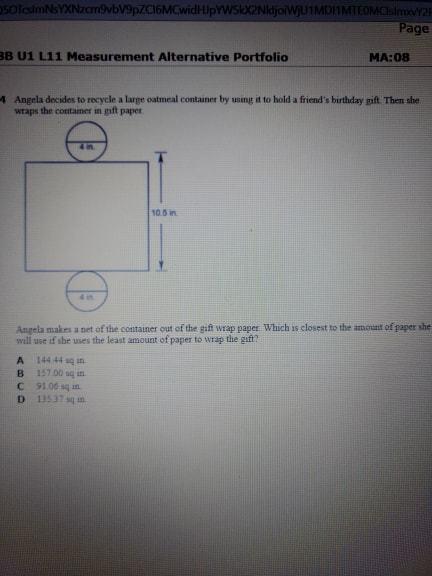
Mathematics, 07.11.2019 20:31 moowalden1239
The national institute of standards and technology (nist) supplies "standard materials" whose physical properties are supposed to be known. for example, you can buy from nist a copper sample whose melting point is certified to be 1084.80°c. of course, no measurement is exactly correct. nist knows the variability of its measurements very we, so it is quite realistic to assume that the population of all measurements of the same sample has the normal distribution with mean μ equal to the true melting point and standard deviation σ = 0.25°c. six measurements on the same copper sample, which is supposed to have melting point 1084.80°c, are provided. 1084.55 1084.89 1085.02 1084.79 1084.69 1084.86 nist wants to give the buyer of this copper sample a 90% confidence interval for its true melting point. what is this interval? to access the complete data set, click the link for your preferred software format excel minitab jmp spssti r mac-txt pc-txt csv crunchit! state: choose the correct problem statement. what is the true melting point of this copper sample? o what is the true melting point of copper? is the true melting point of this copper sample equal to 1084.80°c? o what is the true mean of this sample of six measurements of the copper sample? plan: choose the best plan for finding the answer to the question of the state step we will estimate the true melting point, s (the standard deviation of all the measurements of its melting point), by o we will estimate the true melting point, i (the mean of all the measurements of its melting point, by giving a 90% o we will estimate the true melting point. ơ (the standard deviation of all the measurements of its melting point), by o we will estimate the true melting point, (the mean of all the measurements of its melting point), by giving a 90% giving a 90% confidence interval. confidence interval giving a 90% confidence interval. confidence interval solve: calculate a 90% confidence interval (a, b), (enter your answers rounded to four decimal places.) conclude: what conclusion can we make? o we cannot make any conclusion about the copper sample's true melting point from this data. o we are 90% confident that the mean of the six melting point measurements of the copper sample is between a and o there is a 90% probability that the copper sample's true melting point is between a and b o we are 90% confident that the copper sample's true melting point is between a and b

Answers: 1
Another question on Mathematics

Mathematics, 21.06.2019 18:00
What is the rate of change of a line that passes through (2,-5) and (6,-2)?
Answers: 2

Mathematics, 21.06.2019 20:10
A. use the formula for continuous compounding with the original example: $1000 invested at 2% for 1 year. record the amount to 5 decimal places. use a calculator. b. compare it to the result using the original compound interest formula with n = 365 calculated to 5 decimal places. which has a larger value? explain.
Answers: 1

Mathematics, 22.06.2019 00:10
How do i take any fraction and make it into a decimal or percentage?
Answers: 1

Mathematics, 22.06.2019 04:40
Write an equation in slope-intercept form using the given points (19,-16), (-7,-15)
Answers: 1
You know the right answer?
The national institute of standards and technology (nist) supplies "standard materials" whose physic...
Questions



Mathematics, 02.08.2019 10:50

Geography, 02.08.2019 10:50






Mathematics, 02.08.2019 10:50

History, 02.08.2019 10:50












